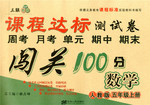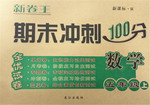
Fish Ears Tell Fish Tales
Fish have ears. Really. They’re quite small and have no opening to the outside world carrying sound through the body. For the past seven years, Simon Thorrold, a university professor, has been examining fish ears, small round ear bones called otoliths (耳石).
As fish grow, so do their otoliths. Each day, their otoliths gain a ring of calcium carbonate (碳酸鈣). By looking through a microscope and counting these rings, Thorrold can determine the exact age of a young fish. As a fish gets older, its otoliths no longer get daily rings. Instead, they get yearly rings, which can also be counted, giving information about the fish’s age, just like the growth rings of a tree.
Ring counting is nothing new to fish scientists. But Thorrold has turned to a new direction. They’re examining the chemical elements (元素) of each otolith ring.
The daily ring gives us the time, but chemistry tells us about the environment in which the fish swam on any given day. These elements tell us about the chemistry of the water that the fish was in. It also says something about water temperature, which determines how much of these elements will gather within each otolith ring.
Thorrold can tell, for example, if a fish spent time in the open ocean before entering the less salty water of coastal areas. He can basically tell where fish are spending their time at any given stage of history.
In the case of the Atlantic croaker, a popular saltwater food fish, Thorrold and his assistant have successfully followed the travelling of young fish from mid-ocean to the coast, a journey of many hundreds of miles.
This is important to managers in the fish industry, who know nearly nothing about the whereabouts of the young fish for most food fish in the ocean. Eager to learn about his technology, fish scientists are now lending Thorrold their ears.
1.What can we learn about fish ears from the text?
A. They are small soft rings.
B. They are not seen from the outside.
C. They are openings only on food fish.
D. They are not used to receive sound.
2.Why does the writer compare the fish to trees?
A. Trees gain a growth ring each day.
B. Trees also have otoliths.
C. Their growth rings are very small.
D. They both have growth rings.
3.Why is it important to study the chemistry of otolith rings?
A. The elements of the otoliths can tell the history of the sea.
B. Chemical contents of otoliths can tell how fast fish can swim.
C. We can know more about fish and their living environment.
D. Scientists can know exactly how old a fish is.
4.How would you understand “fish scientists are now lending their ears”?
A. They are very interested in Thorrold’s research findings.
B. They want to know where they can find fish.
C. They lend their fish for chemical studies.
D. They wonder if Thorrold can find growth rings from their ears.
 名校提分一卷通系列答案
名校提分一卷通系列答案 課程達標測試卷闖關100分系列答案
課程達標測試卷闖關100分系列答案 新卷王期末沖刺100分系列答案
新卷王期末沖刺100分系列答案 全能闖關100分系列答案
全能闖關100分系列答案科目:高中英語 來源:人教社新課程2003年審核高二上冊練習 人教社新課程2003年審核 題型:050
閱讀下面短文,從每題所給的四個選項中選出最佳答案.
Fish have ears. Really. They're quite small and have no opening to the outside world carrying sound through the body. For the past seven years, Simon Thorrold, a university professor, has been examining fish ears, small round ear bones called otoliths.
As fish grow, so do their otoliths. Each day, their otoliths gain a ring of calcium carbonate(碳酸鈣). By looking through a microscope(顯微鏡)and counting these rings, Thorrold can determine the exact age of a young fish. As a fish gets older, its otoliths no longer get dally rings. Instead, they get yearly rings, which can also be counted, giving information about the fish's age, just like the growth rings of a tree.
Ring counting is nothing new to fish scientists. But Thorrold has turned to a new direction. They're examining the chemical elements(元素)of each otolith ring.
The daily ring gives us the time, but chemistry tells us about the environment in which the fish swam on any given day. These elements tell us about the chemistry of the water that the fish was in. It also says something about water temperature, which determines how much of these elements will gather within each otolith ring.
Thorrold can tell, for example, if a fish spent time in the open ocean before entering the less salty water of coastal areas. He can basically tell where fish are spending their time at any given stage of history.
In the case of the Atlantic croaker, a popular saltwater food fish, Thorrold and his assistant have successfully followed the travelling of young fish from mid-ocean to the coast, a journey of many hundreds of miles.
This is important to managers in the fish industry, who know nearly nothing about the whereabouts of the young fish for most food fish in the ocean. Eager to learn about his technology, fish scientists are now lending Thorrold their ears.
(1)What can we learn about fish ears from the text?
[ ]
A. They are small soft rings.
B. They are not seen from the outside
C. They are openings only on food fish.
D. They are not used to receive sound.
(2)Why does the writer compare the fish to trees?
[ ]
A. Trees gain a growth ring each day.
B. Trees also have otoliths.
C. Their growth rings are very small.
D. They both have growth rings.
(3)Why is it important to study the chemistry of otolith rings?
[ ]
A. The elements of the otoliths can tell the history of the sea.
B. Chemical contents of otoliths can tell how fast fish can swim.
C. We can know more about fish and their living environment.
D. Scientists can know exactly how old a fish is.
(4)How would you understand “fish scientists are now lending their ears”?
[ ]
A. They are very interested in Thorrold's research findings.
B. They want to know where they can find fish.
C. They lend their fish for chemical studies.
D. They wonder if Thorrold can find growth rings from their ears.
查看答案和解析>>
科目:高中英語 來源: 題型:閱讀理解
Fish Ears Tell Fish Tales
Fish have ears. Really. They’re quite small and have no opening to the outside world carrying sound through the body. For the past seven years, Simon Thorrold, a university professor, has been examining fish ears, small round ear bones called otoliths (耳石).
As fish grow, so do their otoliths. Each day, their otoliths gain a ring of calcium carbonate (碳酸鈣). By looking through a microscope and counting these rings, Thorrold can determine the exact age of a young fish. As a fish gets older, its otoliths no longer get daily rings. Instead, they get yearly rings, which can also be counted, giving information about the fish’s age, just like the growth rings of a tree.
Ring counting is nothing new to fish scientists. But Thorrold has turned to a new direction. They’re examining the chemical elements (元素) of each otolith ring.
The daily ring gives us the time, but chemistry tells us about the environment in which the fish swam on any given day. These elements tell us about the chemistry of the water that the fish was in. It also says something about water temperature, which determines how much of these elements will gather within each otolith ring.
Thorrold can tell, for example, if a fish spent time in the open ocean before entering the less salty water of coastal areas. He can basically tell where fish are spending their time at any given stage of history.
In the case of the Atlantic croaker, a popular saltwater food fish, Thorrold and his assistant have successfully followed the travelling of young fish from mid-ocean to the coast, a journey of many hundreds of miles.
This is important to managers in the fish industry, who know nearly nothing about the whereabouts of the young fish for most food fish in the ocean. Eager to learn about his technology, fish scientists are now lending Thorrold their ears.
What can we learn about fish ears from the text?
A. They are small soft rings.
B. They are not seen from the outside.
C. They are openings only on food fish.
D. They are not used to receive sound.
Why does the writer compare the fish to trees?
A. Trees gain a growth ring each day.
B. Trees also have otoliths.
C. Their growth rings are very small.
D. They both have growth rings.
Why is it important to study the chemistry of otolith rings?
A. The elements of the otoliths can tell the history of the sea.
B. Chemical contents of otoliths can tell how fast fish can swim.
C. We can know more about fish and their living environment.
D. Scientists can know exactly how old a fish is.
How would you understand “fish scientists are now lending their ears”?
A. They are very interested in Thorrold’s research findings.
B. They want to know where they can find fish.
C. They lend their fish for chemical studies.
D. They wonder if Thorrold can find growth rings from their ears.
查看答案和解析>>
科目:高中英語 來源:2010年浙江省金華一中高二上學期期中考試英語卷 題型:閱讀理解
Fish Ears Tell Fish Tales
Fish have ears. Really. They’re quite small and have no opening to the outside world carrying sound through the body. For the past seven years, Simon Thorrold, a university professor, has been examining fish ears, small round ear bones called otoliths (耳石).
As fish grow, so do their otoliths. Each day, their otoliths gain a ring of calcium carbonate (碳酸鈣). By looking through a microscope and counting these rings, Thorrold can determine the exact age of a young fish. As a fish gets older, its otoliths no longer get daily rings. Instead, they get yearly rings, which can also be counted, giving information about the fish’s age, just like the growth rings of a tree.
Ring counting is nothing new to fish scientists. But Thorrold has turned to a new direction. They’re examining the chemical elements (元素) of each otolith ring.
The daily ring gives us the time, but chemistry tells us about the environment in which the fish swam on any given day. These elements tell us about the chemistry of the water that the fish was in. It also says something about water temperature, which determines how much of these elements will gather within each otolith ring.
Thorrold can tell, for example, if a fish spent time in the open ocean before entering the less salty water of coastal areas. He can basically tell where fish are spending their time at any given stage of history.
In the case of the Atlantic croaker, a popular saltwater food fish, Thorrold and his assistant have successfully followed the travelling of young fish from mid-ocean to the coast, a journey of many hundreds of miles.
This is important to managers in the fish industry, who know nearly nothing about the whereabouts of the young fish for most food fish in the ocean. Eager to learn about his technology, fish scientists are now lending Thorrold their ears.
【小題1】What can we learn about fish ears from the text?
| A.They are small soft rings. |
| B.They are not seen from the outside. |
| C.They are openings only on food fish. |
| D.They are not used to receive sound. |
| A.Trees gain a growth ring each day. |
| B.Trees also have otoliths. |
| C.Their growth rings are very small. |
| D.They both have growth rings. |
| A.The elements of the otoliths can tell the history of the sea. |
| B.Chemical contents of otoliths can tell how fast fish can swim. |
| C.We can know more about fish and their living environment. |
| D.Scientists can know exactly how old a fish is. |
| A.They are very interested in Thorrold’s research findings. |
| B.They want to know where they can find fish. |
| C.They lend their fish for chemical studies. |
| D.They wonder if Thorrold can find growth rings from their ears. |
查看答案和解析>>
科目:高中英語 來源:同步題 題型:閱讀理解
查看答案和解析>>
湖北省互聯網違法和不良信息舉報平臺 | 網上有害信息舉報專區 | 電信詐騙舉報專區 | 涉歷史虛無主義有害信息舉報專區 | 涉企侵權舉報專區
違法和不良信息舉報電話:027-86699610 舉報郵箱:58377363@163.com